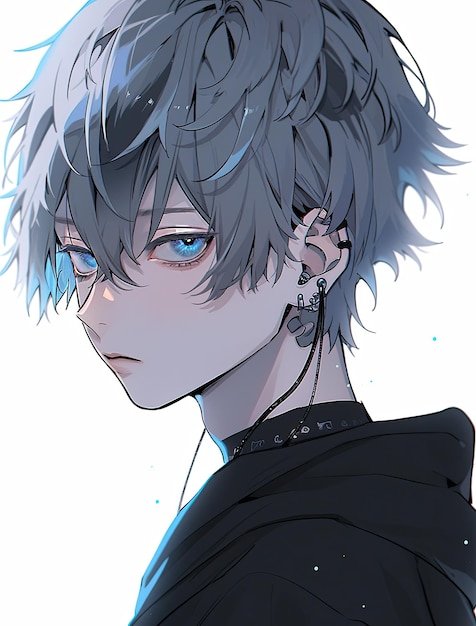In the digital age, personal identity is often curated through profile pictures (PFPs), and one standout trend has emerged: anime PFPs. From casual users to dedicated fans, many individuals are embracing these colorful images of anime characters to represent themselves across social media, gaming, and other online platforms. This article delves into the cultural relevance of anime PFPs, their visual appeal, and how they foster community among fans.
Understanding Anime PFPs
Anime PFPs are profile images that feature characters or artwork from anime—Japanese animated series and films. These images can vary widely, from beloved protagonists of mainstream shows to obscure characters that appeal to niche audiences. By choosing an anime PFP, users are able to convey their interests and connect with others who share similar tastes.
The Visual Magnetism of Anime
One of the most compelling aspects of anime PFPs is their aesthetic allure. Anime art is characterized by its vibrant colors, unique character designs, and imaginative settings. This artistic style captivates viewers, allowing for a range of emotional expression. A user might choose a fierce warrior character to symbolize their strength or a whimsical creature to convey a sense of playfulness.
The ability to select images that resonate with personal feelings or identities adds depth to online interactions. In a world where first impressions are often formed through visual cues, anime PFPs stand out and invite curiosity.
Cultivating Community Through Shared Interests
Anime PFPs serve as a powerful tool for community building. By selecting a character from a specific series, users can instantly communicate their fandom affiliations, creating a sense of belonging. This visual representation can spark conversations and forge connections among fans, as shared interests often lead to deeper discussions about storylines, character arcs, and favorite episodes.
For example, using a PFP of a character from a well-known series like “Naruto” can attract the attention of fellow fans, leading to exchanges of theories and fan art. These interactions not only strengthen ties within the anime community but also create friendships that extend beyond virtual platforms.
The Role of Social Media in Popularizing Anime PFPs
Social media platforms are instrumental in the rise of anime PFPs. Visual-centric sites like Instagram, Twitter, and TikTok have become breeding grounds for anime culture, where users share fan art, cosplay, and memes. The striking visuals of anime PFPs capture attention and encourage users to adopt unique characters as their online avatars.
Furthermore, trends on these platforms can shift rapidly. A viral post featuring a specific character can lead to a surge in its popularity as a PFP, showcasing the dynamic nature of digital culture. This cycle of influence highlights how PFPs can evolve in response to community engagement and online discourse.
Personalization and Expression
Choosing an anime PFP is more than a superficial decision; it’s a form of personalization that allows users to curate their digital identities. Many individuals spend time selecting images that reflect their interests, moods, or personal values. This process not only fosters self-expression but also offers a way to navigate the complexities of online interactions.
In addition to static PFPs, the rise of customizable avatars in gaming platforms has taken personalization to another level. Many games now allow players to create characters inspired by anime aesthetics, providing a unique opportunity for users to represent themselves in creative and individualized ways.
Navigating Challenges and Cultural Awareness
While the popularity of anime PFPs is largely positive, there are challenges that the community must address. One prominent issue is cultural appropriation, which arises when individuals from outside the Japanese culture adopt anime imagery without understanding its context. It’s essential to approach the use of anime art with respect and recognition of its origins.
Moreover, the dominance of certain characters can lead to a lack of diversity in representation. Popular characters may overshadow others, limiting the visibility of a broader array of works and artists within the anime landscape. Encouraging users to explore lesser-known series can help foster a more inclusive appreciation of anime as a whole.
Conclusion
Anime PFPs have become an integral part of online culture, providing a vibrant means of self-expression and community connection. As this trend continues to flourish, it underscores the importance of identity in the digital age and the power of shared interests to unite individuals. For fans and newcomers alike, anime PFPs offer a canvas for creativity and conversation, inviting everyone to explore and celebrate the diverse universe of anime. Whether you’re choosing a fierce hero or a gentle spirit, your PFP can tell a story—one that connects you to a larger community of like-minded enthusiasts.



